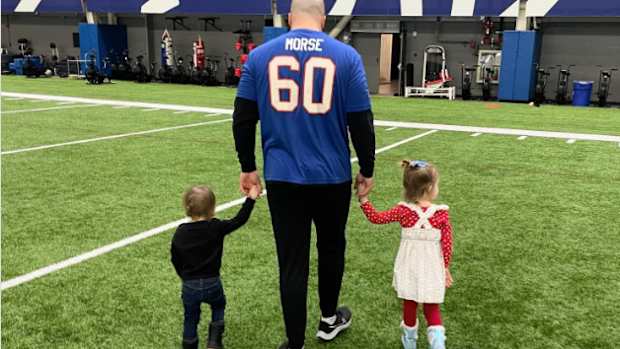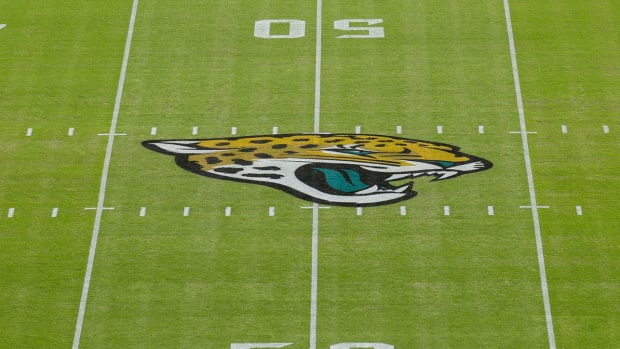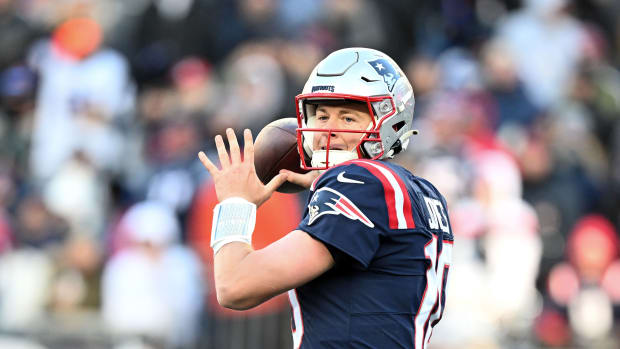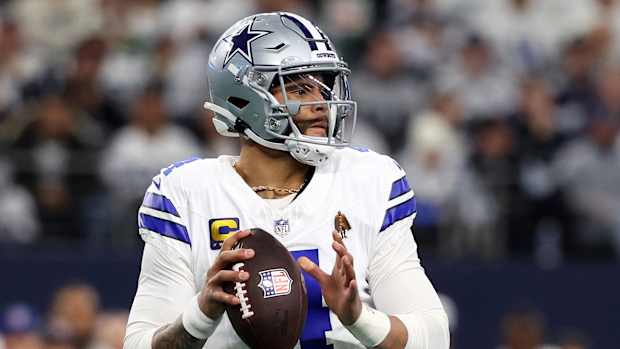Why James Robinson "Matters" to the Jaguars' Offense
Through 10 games, the Jacksonville Jaguars offense has unquestionably been placed on the back one player: undrafted rookie running back James Robinson.
Robinson has touched the ball on 32.5% of Jacksonville’s offensive plays this season, which is the fourth-highest rate in the league behind only Dalvin Cook, Derrick Henry, and Josh Jacobs. On top of that, Robinson has accounted for 78.3% of the team’s rushing yards this season, which is the highest rate in 2020 and among the highest since 2010. Robinson has 172 carries -- all other Jaguars running backs have seven combined.
Jacksonville has a 61% pass rate in neutral situations this season compared to a 64% expected pass rate, based on down, distance, field position and score per RBSDM.com (in all game scripts, the team’s actual and expected pass rate is both 69%). The Jaguars have continued to run relatively frequently despite leading the league in time of possession when trailing (per Football Outsiders) in large part because of Robinson, who ranks fifth in carries and third in rushing yards among all players this season.
Jacksonville’s passes this season have produced -0.0606 Expected Points Added (EPA) per play, while Robinson’s carries have produced -0.0427 EPA per play. Additionally, Robinson has generated a Defense-adjusted Value Over Average (DVOA) of 0.0% compared to the Jaguars passing offense which has a -8.9% DVOA this season.
A negative EPA per play essentially means that, on average, Robinson’s carries lower Jacksonville’s scoring chances, and a DVOA of zero essentially means that Robinson is an average running back. However, the majority of running backs produce a negative EPA per play and DVOA because that’s simply the nature of the position, as running fairly sub-optimal and far less efficient than passing in general- but that’s not necessarily the case in Jacksonville, as Robinson’s carries are slightly more efficient than Jaguars pass attempts in terms of EPA per play and DVOA.
In all honesty, that speaks as much to the team’s quarterback woes as much as it does Robinson’s success. Jake Luton’s -0.256 EPA per play and -50.8% DVOA each rank dead last among qualifying quarterbacks this season, while Minshew’s 0.088 EPA per play and -13.4% DVOA is obviously better but still far below average. The two also rank poorly in standard statistics, as each rank in the bottom half of the league in completion percentage, yards per attempt and passer rating.
The league-average pass rate is rightfully above 50%, but teams should probably be passing even more (especially on early downs) considering how much more productive it is than running. Football fans in general should probably be clamoring for their favorite teams to pass more often, as that recipe tends to yield better results, but the fact that Jacksonville fans aren’t in the wrong for asking its coaches to run the rock more often is saddening.
But while the larger story here is simply that Jacksonville desperately needs an upgrade at quarterback, Robinson’s efficiency in regard to his offensive environment is remarkable. Running back production is largely a function of team environment. The winning entry in last year’s league-sponsored Big Data Bowl essentially found that the best way to predict running back success is based not on the ball carrier’s identity, but the positions of the blockers and defenders, so the fact that Robinson is near- or slightly above-average in most efficiency metrics is truly commendable, even if it seems underwhelming on the surface.
The Jaguars rank 20th in Sportradar’s team yards before contact per carry, 26th in Pro Football Focus’ team run block grade and 27th in ESPN’s team run block win rate metric. No individual Jaguars offensive lineman has a PFF run block grade above 75.0 (for reference, there are 33 qualifying NFL offensive linemen that meet that threshold this season) and only Brandon Linder, Tyler Shatley, and Jawaan Taylor have grades above 60.0 (131 linemen meet that threshold).
Robinson has rushed against a stacked box (eight-plus defenders near the line of scrimmage) on 19.2% of his carries (which ranks 29th among 46 qualifying running backs, per Next Gen Stats), but that number could go down if offensive coordinator Jay Gruden chose to run out of 11 personnel (three wide receiver sets) more often.
Rushing success is largely dependent on defensive alignment, as shown by the 2019 Big Data Bowl winners as well as Five Thirty Eight. Jacksonville rushes on 62% of plays with two wide receivers or less and averages 3.7 yards per carry and a 42% success rate (per Sharp Football Stats). It rushes on just 31% of plays with three wide receivers or more and averages 4.8 yards per carry and a 55% success rate.
And as previously exemplified, the Jaguars don’t have a starting-caliber NFL quarterback currently rostered, which certainly allows opposing defenses to focus on stopping Jacksonville’s rushing attack.
"He does a good job of getting those dirty runs where we don’t lose yards and that’s a heck of a tribute to him," Gruden said about Robinson on Wednesday. "Not every run is blocked for four or five, ten yards. Some aren’t blocked very well. Sometimes the defense has a good plan for you, they bust through the line of scrimmage, but James does an unbelievable job at getting to the line of scrimmage and keeping us out of negative plays.
"As far as James is concerned, he’s been unbelievable, and we should keep trying to run him a little bit more probably and see where that can take us, but he’s been obviously very good.”
There are countless ways that statistics cannot account for what happens on the field. Computer models and even the general eye test have no way of understanding every individual assignment, technique and accompanying result that happens every play, especially near the line of scrimmage, and play-calling is so much more advanced then calling the same handful of successful plays every time like the game is being played on Madden.
But even with this in mind, it’s painfully obvious that the offensive situation in Jacksonville is not an ideal one, which makes Robinson’s production even more extraordinary.
Robinson’s price tag is also significant. He is under contract through 2022 on an annual salary south of a million dollars and came with no opportunity cost as an undrafted free agent. His EPA per play and DVOA this season is better than former fourth overall draft pick Leonard Fournette ever produced in his time in Jacksonville save for his 2.1% DVOA in 2017, which was the last time that the Jaguars posted an above-average passing and overall offensive DVOA.
Robinson is great because of his obvious on-field talent, but the fact that the team didn’t spend significant resources on a position that doesn’t contribute much to wins and is easily replaceable, and now appears to be set at the position for the next few years, is notable for a rebuilding franchise that has and will continue to see heavy roster turnover for the foreseeable future.
Robinson’s efficiency metrics are slightly underwhelming for a player who ranks third in the NFL in rushing yards this season. But his production in spite of his poor surrounding environment, and with minor draft/financial resources devoted to him, is truly incredible.
It’s not unreasonable to think that as the situation around him assumingly improves in the future and he gains experience, he could eventually join the top-tier of NFL running backs. James Robinson was largely unheard of just a few months ago, but now he’s making a convincing argument that he matters to the Jaguars.




